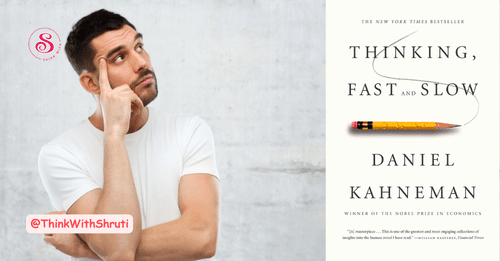In the bustling world we live in, thinking is a constant companion. But what if I told you that thinking isn’t just a singular process? In his groundbreaking work, Daniel Kahneman introduced the concept of two systems of thinking – the fast and the slow. These distinct thinking systems are more than just cerebral functions; they play pivotal roles in our daily lives, affecting decision-making, problem-solving, and even our emotional well-being. In this article, we’ll delve into why thinking fast and slow is so crucial for navigating the complexities of life.
I. The Two Systems: Fast and Slow Thinking
Understanding the differences between fast and slow thinking is the first step towards realizing their importance. Fast thinking, often referred to as System 1 thinking, is automatic and instinctual. It’s the rapid-fire process that helps you make quick decisions, like when you slam on the brakes at a yellow traffic light. Slow thinking, or System 2 thinking, is more deliberate and logical. It’s what you use when solving complex problems, such as calculating a tip at a restaurant.
II. Efficient Decision-Making
Fast thinking is a time-saving grace. It allows us to make countless split-second decisions throughout the day. Consider the act of crossing the street: you quickly assess the traffic and determine if it’s safe to proceed. Fast thinking, when honed, is incredibly efficient, helping us adapt to dynamic situations and stay safe.
III. The Power of Deliberation
On the other hand, slow thinking provides the depth that fast thinking lacks. It’s the mode that allows you to scrutinize a complex issue, such as choosing a career path or making a large investment. The deliberate nature of slow thinking can lead to more rational, informed, and often wiser decisions.
IV. Combating Cognitive Biases
Thinking fast and slow also plays a critical role in combating cognitive biases. Fast thinking can be prone to cognitive shortcuts, leading to biases like confirmation bias and availability bias. Slow thinking, with its more reasoned approach, acts as a check against these cognitive pitfalls.
V. Emotional Regulation
Emotional intelligence is a domain where thinking fast and slow can truly shine. Fast thinking helps you read emotions in real-time, fostering empathy and interpersonal connections. Slow thinking enables you to manage and regulate your emotions, ensuring you respond thoughtfully rather than react impulsively.
VI. Problem-Solving and Creativity
Problem-solving and creativity are domains where slow thinking takes the lead. When tackling intricate issues or generating innovative ideas, slow thinking allows you to dig deep, analyze, and synthesize information.
VII. The Mindful Blend
The most effective approach to thinking involves a mindful blend of fast and slow thinking. Recognizing when to rely on each system is the key to efficient and intelligent decision-making. It’s like being the conductor of an orchestra, knowing when to bring in different instruments for the perfect symphony.
Takeaway
In the symphony of life, the two systems of thinking – fast and slow – are the virtuoso performers. Fast thinking lets you adapt to a fast-paced world, while slow thinking provides the depth and reflection needed for complex challenges. Understanding the significance of these thinking systems can help you harness their power, ultimately leading to more effective decision-making, improved problem-solving, and a deeper emotional connection with the world around you. So, embrace both fast and slow thinking, and conduct your life’s symphony with grace.
References
- Kahneman, D. (2011). Thinking, Fast and Slow. Farrar, Straus, and Giroux.
- Gladwell, M. (2005). Blink: The Power of Thinking Without Thinking. Little, Brown and Company.
- Lieberman, M. D. (2013). Social: Why Our Brains Are Wired to Connect. Crown.
- Duhigg, C. (2012). The Power of Habit: Why We Do What We Do in Life and Business. Random House.
- Goleman, D. (1995). Emotional Intelligence: Why It Can Matter More Than IQ. Bantam Books.
- Stanovich, K. E. (2011). Rationality and the Reflective Mind. Oxford University Press.


[…] Also read, Importance of Thinking Fast & Slow […]